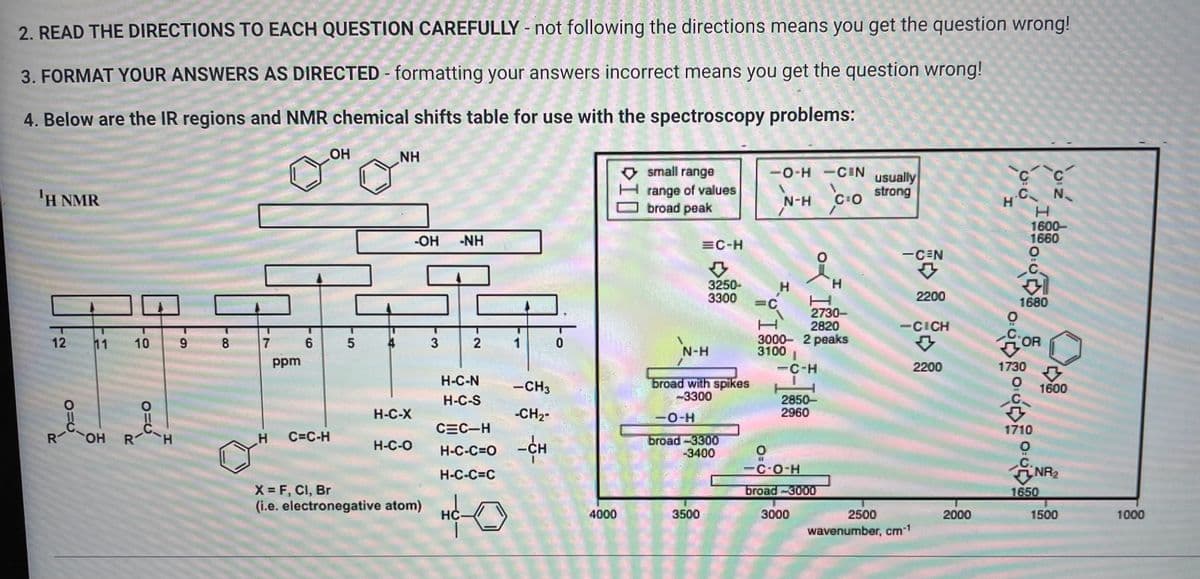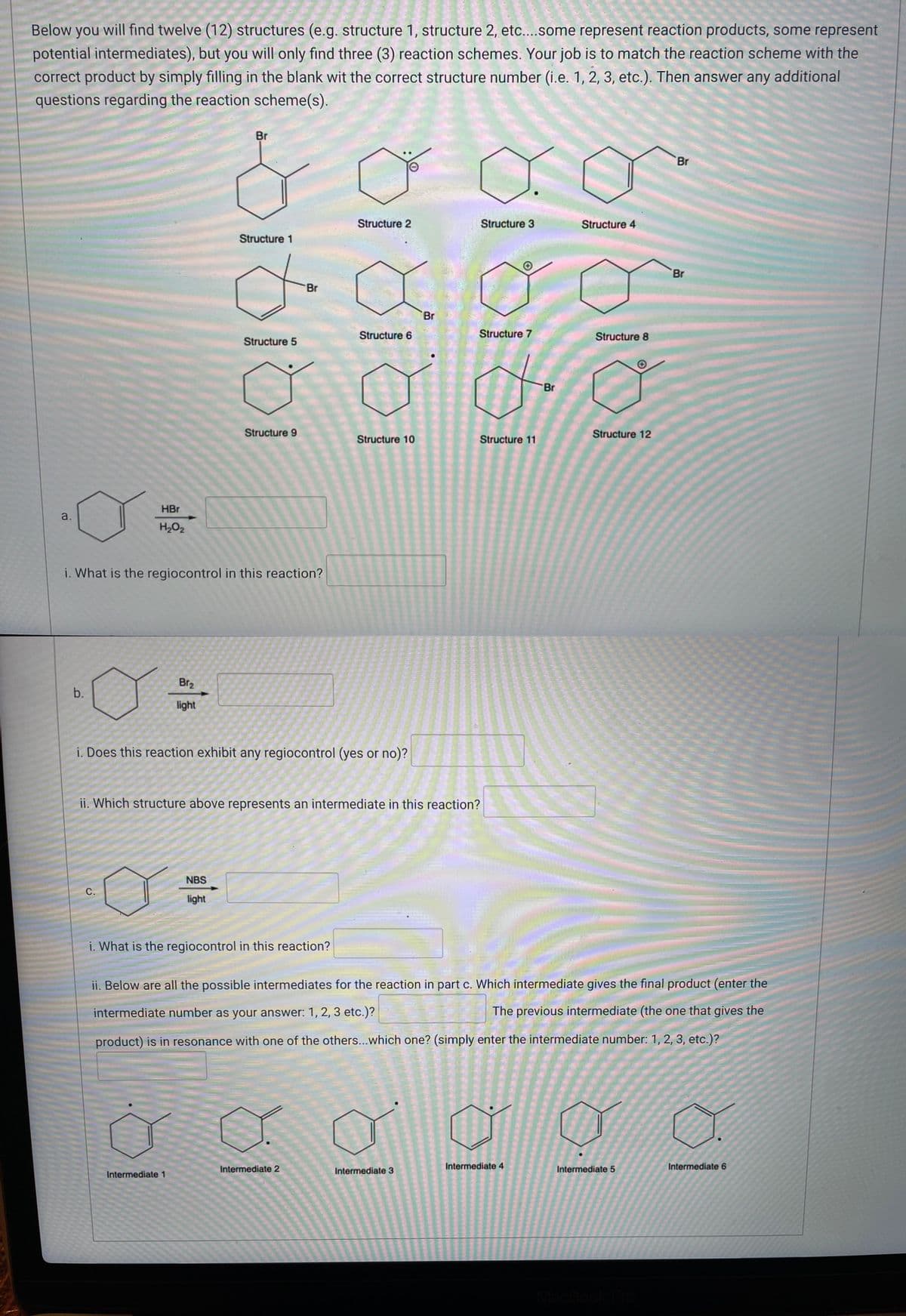Below you will find twelve (12) structures (e.g. structure 1, structure 2, etc....some represent reaction products, some represent potential intermediates), but you will only find three (3) reaction schemes. Your job is to match the reaction scheme with the correct product by simply filling in the blank wit the correct structure number (i.e. 1, 2, 3, etc.). Then answer any additional questions regarding the reaction scheme(s). a. HBr H₂O₂ b. Br₂ light & aar Structure 3 bibibi i. What is the regiocontrol in this reaction? Structure 1 NBS light Intermediate 1 Structure 5 Structure 9 i. What is the regiocontrol in this reaction? bibibi i. Does this reaction exhibit any regiocontrol (yes or no)? Structure 2 Structure 6 Intermediate 2 Structure 10 Br ii. Which structure above represents an intermediate in this reaction? Structure 7 O Structure 11 Br da ga Intermediate 3 Structure 4 Intermediate 4 Structure 8 ii. Below are all the possible intermediates for the reaction in part c. Which intermediate gives the final product (enter the intermediate number as your answer: 1, 2, 3 etc.)? The previous intermediate (the one that gives the product) is in resonance with one of the others...which one? (simply enter the intermediate number: 1, 2, 3, etc.)? Structure 12 Br Intermediate 5 Br Intermediate 6
Basics in Organic Reactions Mechanisms
In organic chemistry, the mechanism of an organic reaction is defined as a complete step-by-step explanation of how a reaction of organic compounds happens. A completely detailed mechanism would relate the first structure of the reactants with the last structure of the products and would represent changes in structure and energy all through the reaction step.
Heterolytic Bond Breaking
Heterolytic bond breaking is also known as heterolysis or heterolytic fission or ionic fission. It is defined as breaking of a covalent bond between two different atoms in which one atom gains both of the shared pair of electrons. The atom that gains both electrons is more electronegative than the other atom in covalent bond. The energy needed for heterolytic fission is called as heterolytic bond dissociation energy.
Polar Aprotic Solvent
Solvents that are chemically polar in nature and are not capable of hydrogen bonding (implying that a hydrogen atom directly linked with an electronegative atom is not found) are referred to as polar aprotic solvents. Some commonly used polar aprotic solvents are acetone, DMF, acetonitrile, DMSO, etc.
Oxygen Nucleophiles
Oxygen being an electron rich species with a lone pair electron, can act as a good nucleophile. Typically, oxygen nucleophiles can be found in these compounds- water, hydroxides and alcohols.
Carbon Nucleophiles
We are aware that carbon belongs to group IV and hence does not possess any lone pair of electrons. Implying that neutral carbon is not a nucleophile then how is carbon going to be nucleophilic? The answer to this is that when a carbon atom is attached to a metal (can be seen in the case of organometallic compounds), the metal atom develops a partial positive charge and carbon develops a partial negative charge, hence making carbon nucleophilic.


Trending now
This is a popular solution!
Step by step
Solved in 3 steps with 12 images









